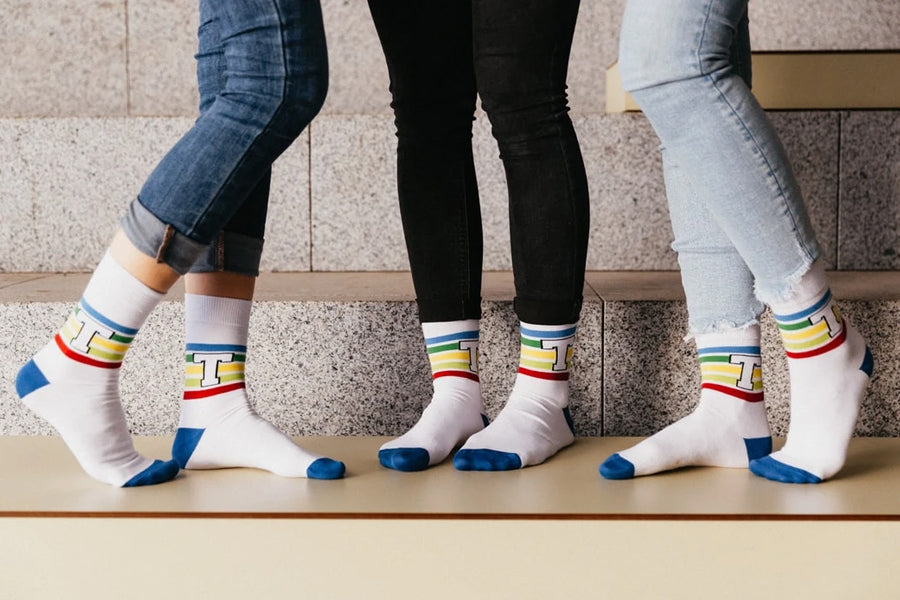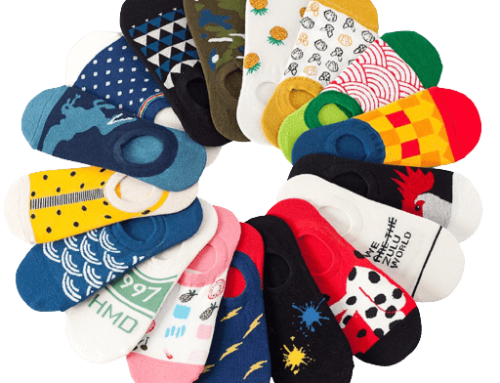Before getting started, it’s important to understand what is involved in running an e-commerce business and how you will market your products.
It also helps to have a clear vision for your business, including what type of socks you will sell and how you plan on making money from them. Once these things are decided upon, there are several steps that should be taken before launching your store.
- Develop a Business Plan: Before you start your online sock business, it is important that you create a comprehensive plan detailing the steps and strategies needed to launch and grow your small business
- Your plan should include an executive summary of your company, detailed descriptions of the services or products offered, as well as market analysis and financial projections
- Choose Your Products: When starting an online sock business, decide what types of socks you will offer such as crew socks, ankle socks, athletic socks or knee-highs
- Consider offering several different materials like cotton, wool or synthetic blends for customers to choose from
- Source Suppliers & Inventory: Research potential suppliers who can provide quality materials at competitive prices to ensure that your profit margin is high enough to sustain operations with reasonable costs associated with stocking inventory items including shipping fees and warehouse rental fees if necessary
- Set Up Your Online Storefront: Select a website platform provider such as Shopify which provides easy-to-use store design templates along with marketing tools so that you can easily manage orders , payments etc for customers visiting your site
- You may also need payment gateway providers such PayPal in order to accept credit card payments on checkout pages
- Promote & Market Your Business : Once everything is set up , it’s time to promote and market your online sock business through various channels like search engine optimization (SEO), content creation , email campaigns , pay per click advertising (PPC) etc, depending upon budget allocated towards digital advertisement efforts
Is the Sock Industry Profitable?
On the other hand, however, production costs can be high and competition is fierce between companies selling their own brands and knock-offs.
With this said, it’s safe to say that yes – on average – the sock industry can be considered a profitable venture. For starters, let’s look at consumer demand for socks; over 1 billion pairs are sold annually worldwide with an estimated global market size of $35 billion USD (as of 2019).
As such, it’s clear that there is ample opportunity for businesses within this sector to make money as long as they can keep up with current trends and offer quality products at competitive prices.
Additionally, due to their relatively low cost compared to more expensive garments like jeans or sweaters – people tend to buy multiple pairs without feeling too much pinch in their wallets; thus creating further opportunities for profit within the industry.
This means that businesses have less overhead than many other industries allowing them greater flexibility when pricing out goods and setting margins for profits/losses accordingly.
That being said though – competition can also be fierce amongst sellers trying to capture market share within this space resulting in aggressive pricing strategies by manufacturers who want desperately want customers attention (and dollars).
Are Socks Good to Sell Online?
Are socks a good product to sell online? In short, the answer is yes! Socks are an excellent choice for those looking to start their own online business.
They are relatively inexpensive and easy to store, so you don’t have to worry about dealing with bulky items. Additionally, they come in all shapes and sizes, giving customers plenty of options when shopping around. And lastly, they’re a must-have item that everyone needs – making them an attractive buy for customers who shop online.
One great thing about selling socks online is that there’s no shortage of potential customers out there who need them. From athletes and soccer players looking for compression or performance socks to fashion lovers wanting something unique like ankle boots or knee high boots.
Plus with the rise of athleisure wear, people are more likely now than ever before to purchase sports apparel such as athletic socks on the web rather than going into stores themselves which makes your job much easier when selling this type of product.
When it comes down to selecting what types of socks you should be stocking in your inventory there are a few things you will want consider first: pricing structure, size range availability and material quality/thickness & colour varieties offered by suppliers as well as customer demand within your target market(s).
It’s also worth noting that many retailers have started offering custom designs too – allowing buyers even further scope for personalization which can really help boost sales numbers over time due its novelty value amongst shoppers!
How Much Does It Cost to Make Socks?
In the textile industry, socks are one of the most common items being produced. But how much does it cost to make a pair of socks? To understand this, let’s go through each step in the production process and look at its associated costs.
To begin with, raw materials are needed to create a sock. Typically, cotton is used as it is soft and durable making it ideal for use in sock production.
Depending on where you source your cotton from and quality requirements, purchasing enough material for 1 pair of socks can cost anywhere between $1-2 per pair or more depending on the size/style of sock desired.
Once you have purchased your fabric, other components that will be needed include thread (around $0.10 – 0.15 cents per pair), elastics ($0.05-$0.07 per pair) and labels ($0-5$ per thousand pieces).
This requires cutting machines which range from basic hand operated ones costing around $150 upwards to automated ones costing several thousands Of dollars depending on capabilities required by manufacturer.
. Cutting fees vary significantly according to type of machine used but usually come out at an average rate of between 20cents-50cents per item once setup costs are factored in..
The next step involves sewing everything together – this requires either manual labor or automated machinery such as industrial lockstitch machines which can range from anything between 500$ – 10 000$. Again like with cutting fees , Sewing fees depend heavily upon both type & number off machines employed.
Typically Each Machine produces 4 pairs off socks Per Hour meaning The Cost toes manufacture each piece Would Be Around 25Cents – 50Cents Per Item Once Setup Costs Are Factored In.
. Finally after all steps are complete , inspection , packing & shipping Will Need To Be Done Also Incurring Additional Costs That Could Range From Anything Between 5 Cents Upwards Depending On Level Of Automation Involved ..
All things considered It Is Estimated That Making A Pair Off Socks Can Cost Anything Between 2 Dollars And 6 Dollars + Shipping Costs Depending On Type /Size /Quality Required By Manufacturer .
How Do I Start a Sock Shop?

1. Choose Your Niche: Before diving into your business plan, decide what kind of socks your shop will specialize in. Do you want to focus on designer fashion socks? Athletic styles?
Or maybe something more whimsical like animal or food-themed designs? Knowing your niche will help inform every other decision related to running your sock shop.
2. Source Quality Suppliers: Once you know which type of socks you’ll be carrying, it’s time to look for suppliers who can provide them at wholesale prices so that you can make a decent profit margin when reselling them in your own store.
Research several different companies before deciding which one(s) will give you the best quality products and most reasonable prices—and don’t forget about shipping fees!
You’ll need a website builder (such as Wix or Squarespace), domain name registration (GoDaddy), payment processing software (PayPal, Stripe), and hosting services (HostGator).
If possible, try using integrated solutions that offer multiple services under one roof—it will save time and money in both setup costs and ongoing maintenance expenses down the road.
This content should not only engage potential buyers but also promote brand awareness around what makes yours special amongst competitors selling similar items by communicating its personality through visuals/textual messaging etc..
5 Launch & Monitor Performance : Finally when everything’s ready pull off the trigger by launching officially with appropriate announcements across relevant channels – then consistently monitor performance metrics over time including website analytics , sales reports , customer feedback etc..to ensure operations remain optimized based upon data collected .
Sock Business Plan
However, before you take the plunge into starting your own sock company, it’s important to develop a comprehensive business plan that will help ensure success.
The first step in creating your sock business plan should be market research. You need to determine who your target customer base is and what types of socks they would be interested in purchasing.
This can include researching trends within specific demographics and geographic locations as well as analyzing competitors within the marketplace.
Additionally, you should identify potential sales channels such as retail stores or online retailers where you could distribute your socks once produced.
Here, you will need to decide which materials and manufacturing processes will work best for producing quality products at competitive prices while still achieving profitability margins that make sense for your particular venture.
Additionally, consider any factors related to safety regulations or labor laws that may affect how you produce certain items or handle employee compensation during this process as well so these aspects can also be taken into consideration when developing pricing structures later on down the line.
Conclusion
Once you have decided on the type of socks then research your target market and develop a plan for how to reach them.
Then create a website where customers can view and purchase your products. You’ll need to set up e-commerce capabilities so that customers can easily check out with their purchases. Additionally make sure that your website is user friendly and visually appealing in order for it to be successful.
Make sure also that you know all applicable taxes and fees associated with selling items online as well as shipping costs. Finally don’t forget about marketing! Create social media accounts, use influencer marketing campaigns and advertise through email newsletters in order to get the word out about your new business venture!
With these tips in mind, you’ll be well on your way towards getting started in creating an online sock empire!




